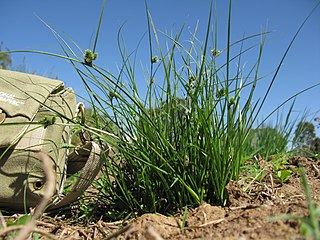
Carex inversa, commonly known as knob sedge, is a species of sedge of the family Cyperaceae that is native to parts of Australia and New Zealand and has also been introduced into Great Britain.
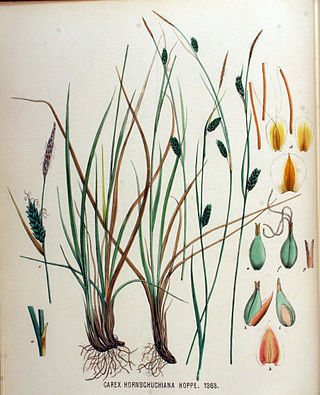
Carex hostiana, the tawny sedge, is a species of flowering plant in the genus Carex, native to Europe and northeast Canada, and extinct in Massachusetts. It is a member of the Carex flava species complex.
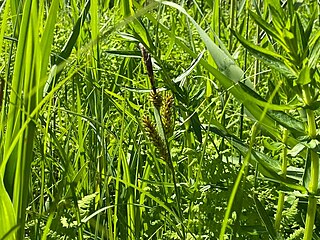
Carex rugulosa, also known as the thick-nerve sedge or the slender-culm thick-nerve sedge, is a tussock-forming perennial in the family Cyperaceae. It is native to eastern parts of Asia.

Carex breviscapa is a tussock-forming perennial in the family Cyperaceae. It is native to eastern parts of the south east Asia and north eastern Australia

Carex scaposa, also known as hua ting tai cao in Chinese, is a tussock-forming species of perennial sedge in the family Cyperaceae. It is native to eastern parts of Asia.

Carex ventosa, also known as Chatham Islands forest sedge, is a tussock-forming species of perennial sedge in the family Cyperaceae. It is native to the Chatham Islands.

Carex cruenta is a tussock-forming species of perennial sedge in the family Cyperaceae. It is native to parts of Asia, from Pakistan in the west to south central parts of China in the east.
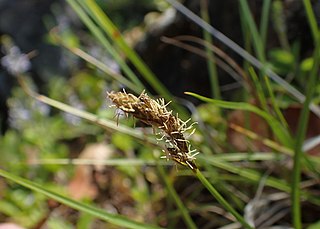
Carex haematostoma, also known as hong zui tai cao in China, is a tussock-forming species of perennial sedge in the family Cyperaceae. It is native to parts of central Asia and China.

Carex parva, also known to Chinese people as xiao tai cao, is a tussock-forming species of perennial sedge in the family Cyperaceae. It is native to parts of Asia from Afghanistan to Mongolia.
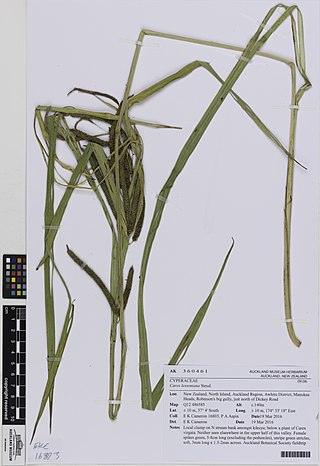
Carex lessoniana, also commonly known as rautahi or cutty grass, is a tussock-forming species of perennial sedge in the family Cyperaceae. It is native to parts of New Zealand.
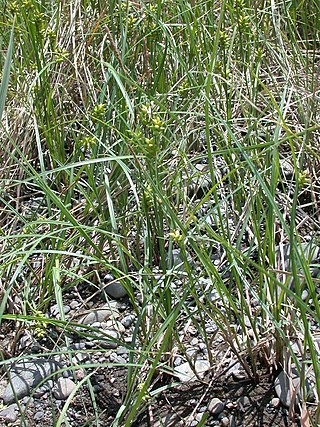
Carex scabrifolia, also known as cao ye tai cao, is a tussock-forming species of perennial sedge in the family Cyperaceae. It is native to eastern parts of Asia.
Carex thunbergii is a tussock-forming species of perennial sedge in the family Cyperaceae. It is native to parts of eastern Asia from around Manchuria in the west to Japan in the east. It is found in Primorye to the north to Korea in the south.

Carex gaudichaudiana, also known as fen sedge, is a tussock-forming species of perennial sedge in the family Cyperaceae. It is native to parts of Australia and New Zealand.
Carex californica is a tussock-forming species of perennial sedge in the family Cyperaceae. It is native to western parts of the United States.
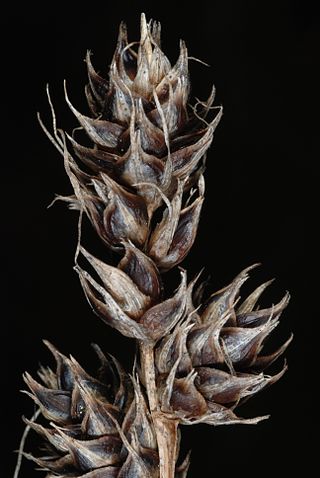
Carex gravida, also known as heavy-fruited sedge, heavy sedge or long-awned bracted sedge, is a tussock-forming species of perennial sedge in the family Cyperaceae. It is native to southern parts of Canada and parts of the United States.
Carex helferi is a tussock-forming species of perennial sedge in the family Cyperaceae. It is native to parts of South East Asia.
Carex interrupta is a tussock-forming species of perennial sedge in the family Cyperaceae. It is native to south eastern parts of Canada and north eastern parts of the United States.
Carex alsophila, commonly known as forest sedge, is a tussock-forming species of perennial sedge in the family Cyperaceae. It is native to Victoria in south eastern Australia.
Carex cephalotes, also known as wire-head sedge, is a tussock-forming species of perennial sedge in the family Cyperaceae. It is native to south eastern Australia and New Zealand.

Carex vestita, also commonly known as velvet sedge, is a tussock-forming species of perennial sedge in the family Cyperaceae. It is native to eastern parts of the United States.













